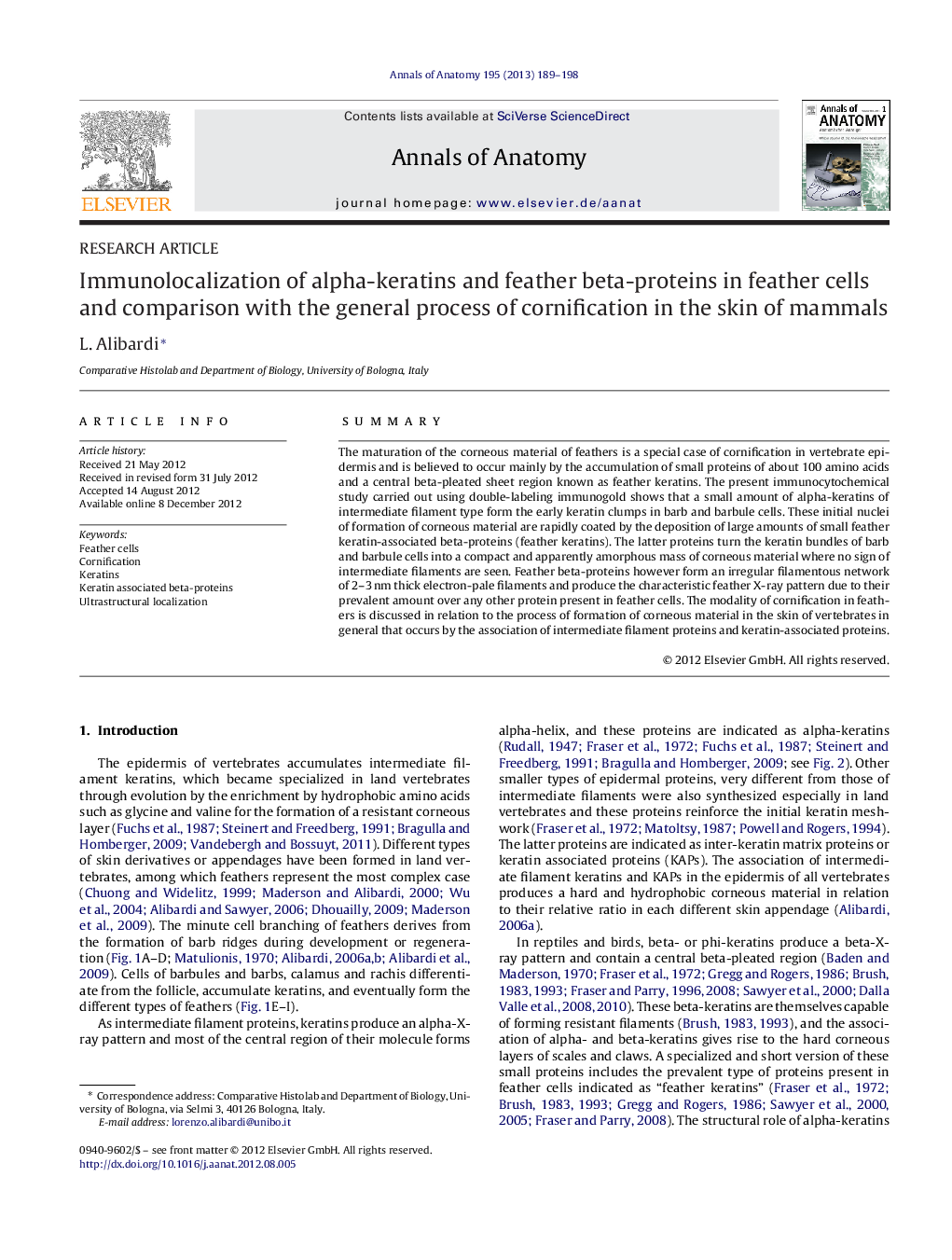| Article ID | Journal | Published Year | Pages | File Type |
|---|---|---|---|---|
| 8461472 | Annals of Anatomy - Anatomischer Anzeiger | 2013 | 10 Pages |
Abstract
The maturation of the corneous material of feathers is a special case of cornification in vertebrate epidermis and is believed to occur mainly by the accumulation of small proteins of about 100 amino acids and a central beta-pleated sheet region known as feather keratins. The present immunocytochemical study carried out using double-labeling immunogold shows that a small amount of alpha-keratins of intermediate filament type form the early keratin clumps in barb and barbule cells. These initial nuclei of formation of corneous material are rapidly coated by the deposition of large amounts of small feather keratin-associated beta-proteins (feather keratins). The latter proteins turn the keratin bundles of barb and barbule cells into a compact and apparently amorphous mass of corneous material where no sign of intermediate filaments are seen. Feather beta-proteins however form an irregular filamentous network of 2-3Â nm thick electron-pale filaments and produce the characteristic feather X-ray pattern due to their prevalent amount over any other protein present in feather cells. The modality of cornification in feathers is discussed in relation to the process of formation of corneous material in the skin of vertebrates in general that occurs by the association of intermediate filament proteins and keratin-associated proteins.
Related Topics
Life Sciences
Biochemistry, Genetics and Molecular Biology
Cell Biology
Authors
L. Alibardi,
